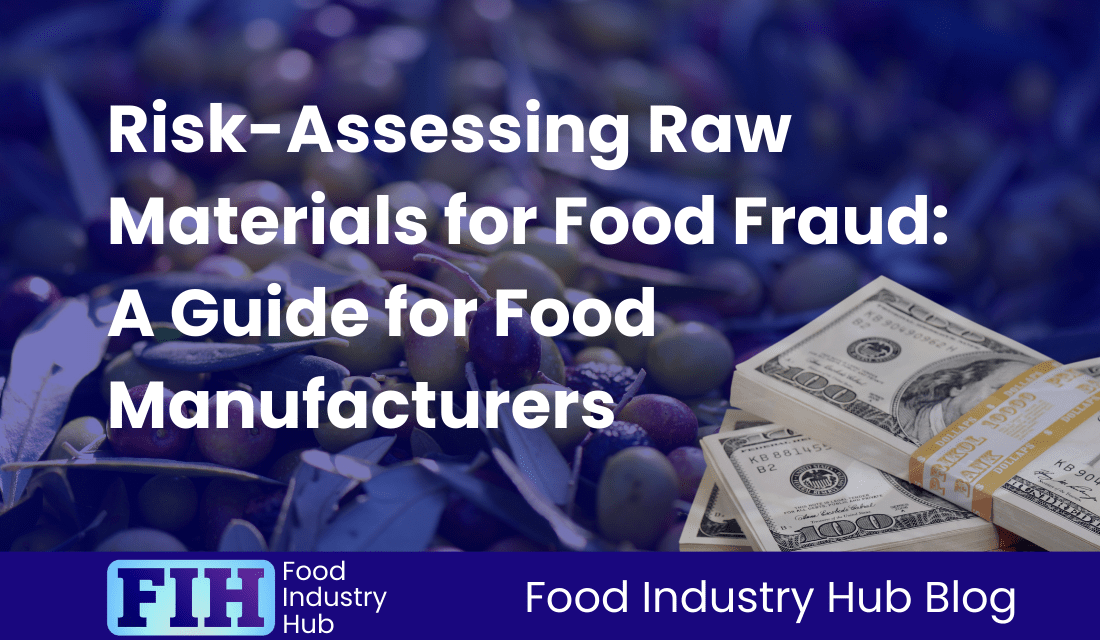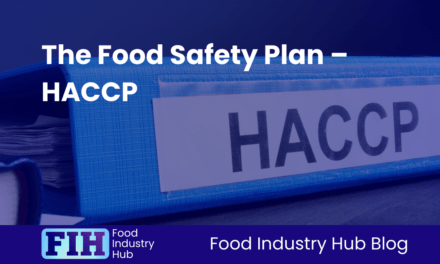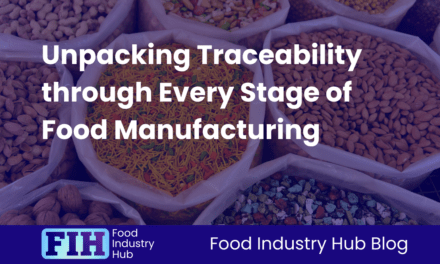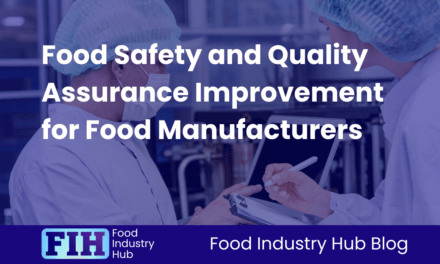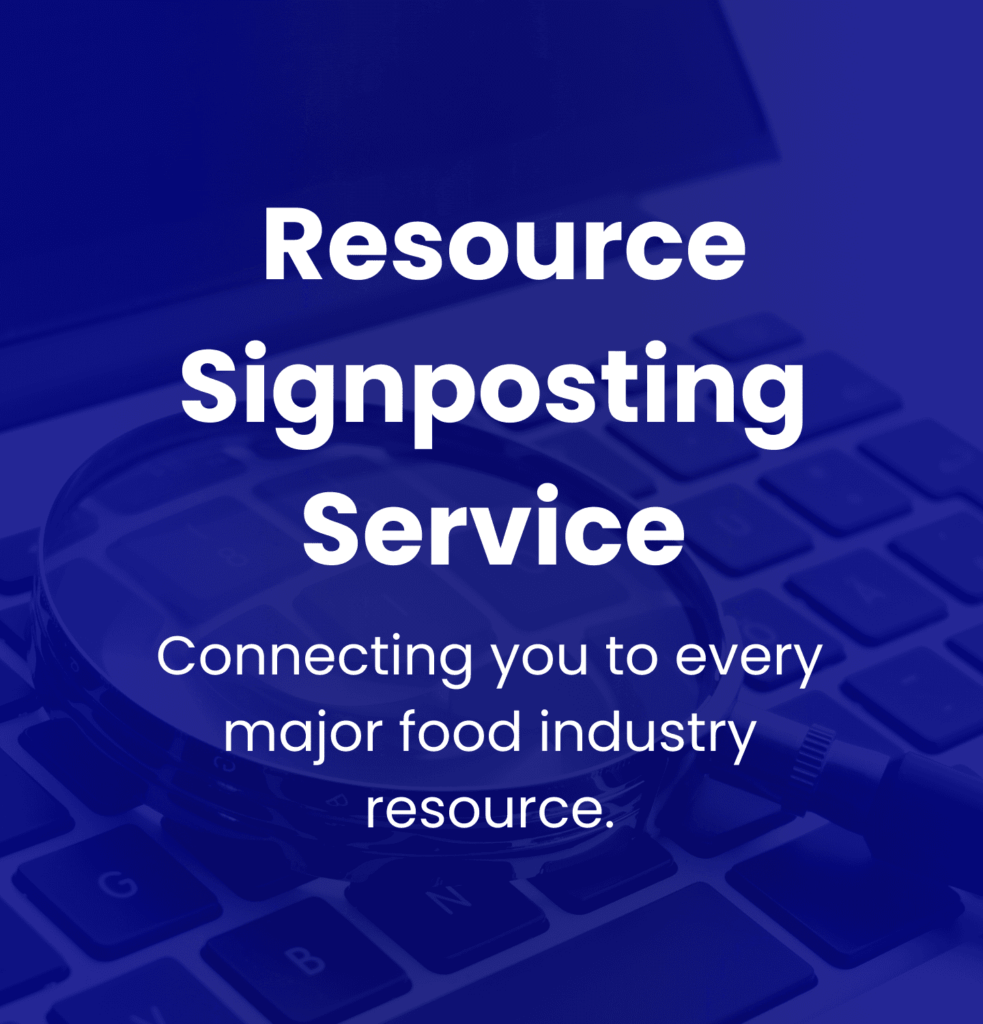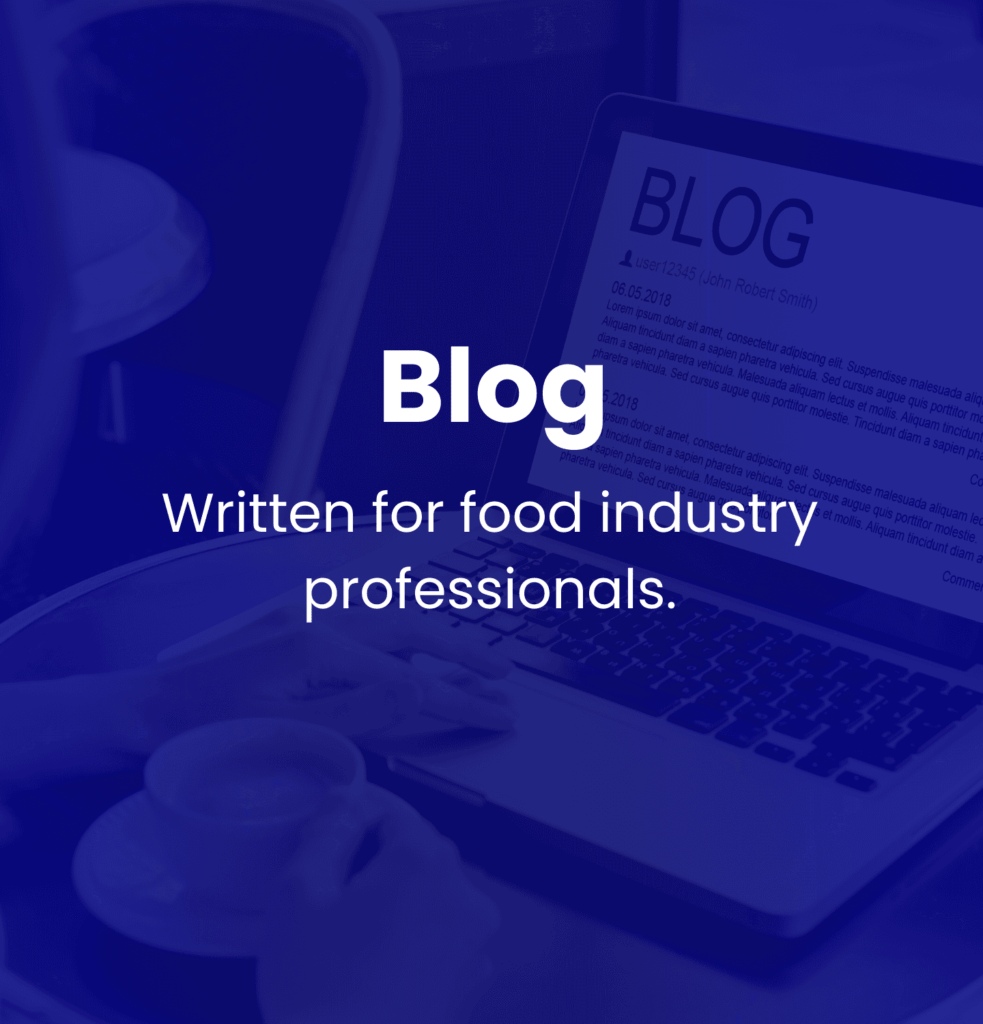Introduction
Are you looking for a comprehensive guide to conducting a simple and effective vulnerability assessment for raw materials? If so, you’ve come to the right place! This post will provide an overview of why it is important to conduct a vulnerability assessment and shed light on best practices.
We’ll discuss historical evidence of, and economic factors that can encourage substitution, adulteration, and fraudulent activity related to raw materials. Additionally, we will take a closer look at ease of access within the supply chain, sophistication in routine testing practices along with identifying potential adulterants in the raw material itself.
Finally, we’ll cover potential outcomes and actions resulting from the assessment as well as how authenticity verification testing can help mitigate risks associated with fraud or adulteration.
Stay tuned to uncover the secrets of risk-assessing raw materials for food fraud – your business’s reputation may depend on it.
As we dive into the topic, you’ll be interested to know that Food Industry Hub offers integrated management systems for food manufacturers, which you can use to strengthen your assurance processes.
Table of Contents
Key Takeaways
- Conduct vulnerability assessments to identify and mitigate food fraud risks effectively.
- Prioritise high-risk materials and establish stringent supplier verification processes.
- By conducting vulnerability assessments, implementing authenticity verification testing, and staying vigilant of emerging trends, food manufacturers can mitigate the risks of food fraud and protect their brand reputation.
- It’s crucial to prioritise the authenticity of raw materials to ensure the integrity of finished products and maintain customer trust.
- Stay proactive and informed to safeguard against potential brand damage and maintain consumer perception of your products.
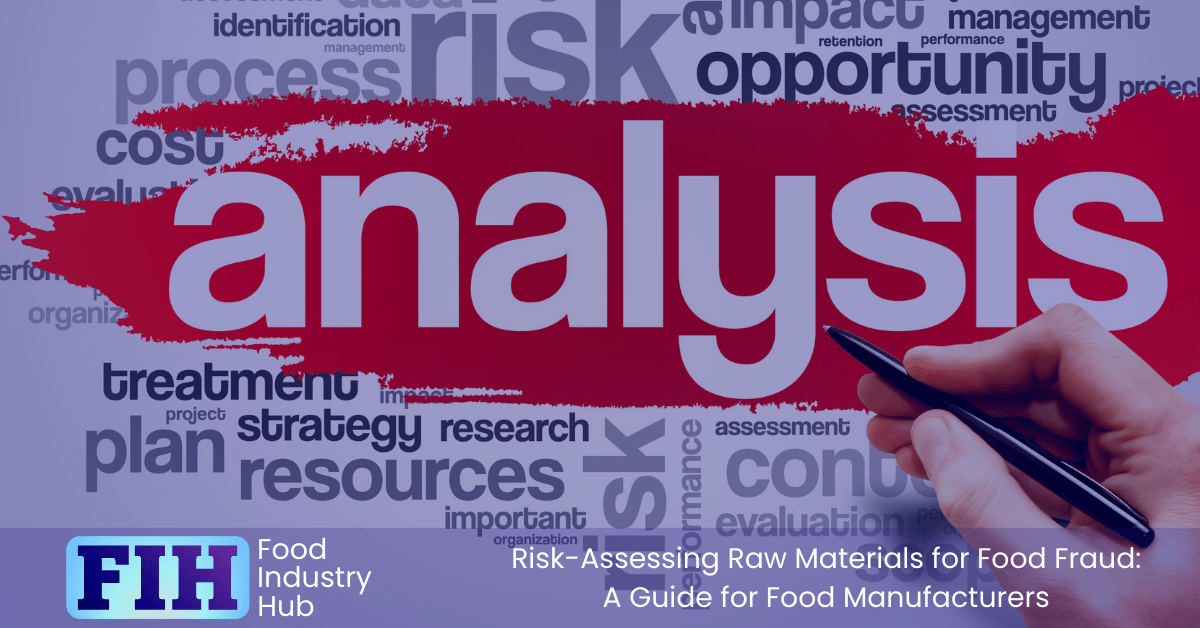
Food Industry Hub Management Systems is designed to refine your food safety and quality management processes, resulting in greater confidence and improved quality assurance at every level.
Why Conduct a Vulnerability Assessment?
Conducting a vulnerability assessment on raw materials is essential for any business looking to mitigate risks associated with food crime. By assessing vulnerabilities within your supply chain, you can pinpoint weak points where fraudulent activities may occur. This proactive approach allows you to implement targeted preventive measures, reducing the likelihood of falling victim to food fraud incidents.
Conducting a vulnerability assessment allows you to gain a deep understanding of the specific risks associated with your raw materials. This insight enables you to prioritise resources and focus on areas that pose the greatest threat to your products’ integrity. By addressing vulnerabilities early on, you can better understand supply chain resilience and improve your overall risk management strategy.
A detailed vulnerability assessment aligns with regulatory requirements and industry standards, demonstrating your commitment to transparency and quality assurance. It also enhances your brand reputation by showcasing your dedication to providing safe and authentic products to consumers. Ultimately, investing time and resources in conducting a vulnerability assessment can significantly mitigate the risks of food fraud and safeguard your business’s reputation.
A risk-assessment specifically evaluating authenticity risks helps to identify points of vulnerability in the supply chain, so you can take steps to ensure your products are safe and authentic. It will provide insight into how easy it is for fraudulent activity or adulteration to occur, as well as identifying potential adulterants in raw materials themselves. This kind of assessment may help you determine if additional authenticity verification tests should be conducted in order to mitigate risks associated with fraud or adulteration. By conducting a vulnerability assessment now, you can save yourself valuable time and money down the line by preventing potentially costly issues related to product authenticity.
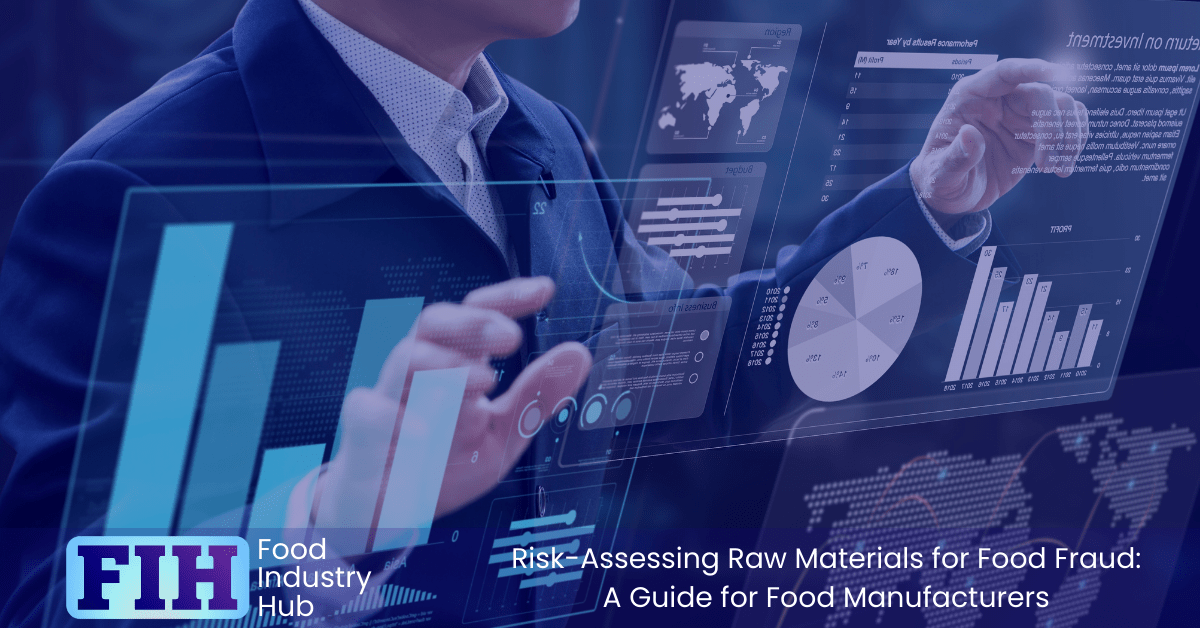
How To Conduct a Vulnerability Assessment
Conducting a vulnerability assessment involves systematically evaluating your supply chain to identify and address potential weak points where food fraud may occur. To start, gather information about your suppliers, their practices, and the potential risks associated with each raw material they provide. Utilise tools such as questionnaires, audits, and historical data to gain a comprehensive understanding of your supply chain’s vulnerabilities.
Prioritise your focus by assessing the likelihood and impact of different vulnerabilities. Consider factors such as the cost of prevention, the severity of consequences, and the likelihood of occurrence when determining which vulnerabilities represent the greatest threats to the authenticity of your products.
Collaborate with your suppliers to implement mitigation strategies that target the identified weak points. This may involve implementing stricter supplier requirements, enhancing monitoring and verification procedures, or establishing contingency plans in case of fraud incidents.
Regularly review and update your vulnerability assessment to adapt to changes in your supply chain landscape and emerging food fraud risks. By taking a proactive approach to vulnerability assessment, you can strengthen your food fraud prevention efforts and safeguard your products and brand reputation.
Food Fraud Risk Factors
When considering food fraud risk factors, historical evidence of substitution, adulteration, and fraud plays a crucial role in understanding vulnerabilities. Simply put, historical evidence of food fraud applied to a particular type of raw material is a strong indication that that raw material is at risk of fraud attempts into the future – independent of any other risk factor.
Economic factors are usually the dominant motivator for people to commit food fraud. In fact, The U.S. Food & Drug Administration (FDA) refers to food fraud as ‘economically motivated adulteration (food fraud), owing to the inherent link between financial incentives and fraud attempts.
Alongside historical instances of substitution, adulteration, and fraud and economic incentives, food fraud risk factors include…
- The ease of access to raw materials throughout the supply chain.
- The reliability of routine testing in identifying inauthentic materials.
and
- The nature of the raw material itself, and the propensity to conceal adulteration as a result of the material’s characteristics.
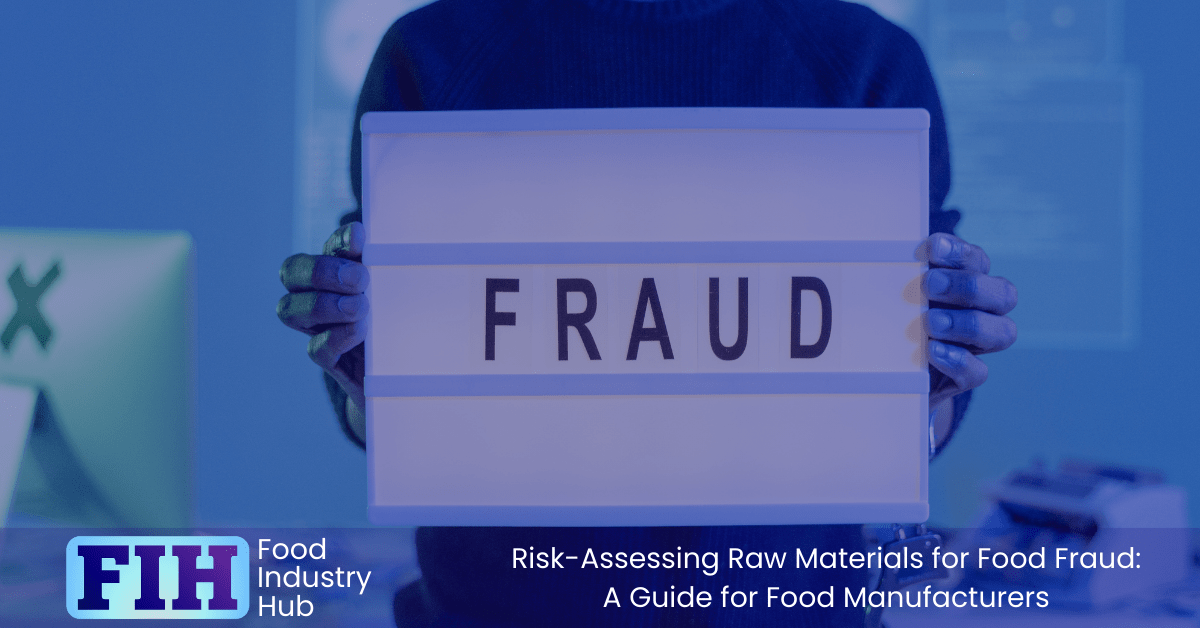
Sign-up for the Food Industry Hub Mail Service
We regularly produce new content for food industry professionals, and the Food Industry Hub Mail Service is the best way to stay up to date with the latest additions.
Signup today to be added to the Food Industry Hub mailing list.
Historical Evidence of Substitution, Adulteration, And Fraud
Historical instances of food crime can reveal a pattern of substitution, adulteration, and fraud – highlighting significant food fraud risk factors that apply to particular raw materials or categories of food.
Using historical instances of food fraud to form part of the basis for a vulnerability assessment can make it quite easy and accessible for food manufacturers to gauge fraud risks for each raw material or type of raw material that they handle. To illustrate, you might regard honey as high risk for vulnerability to substitution and alteration and fraud based on historical evidence reported by a range of authorities and information providers, and publications such as The European Anti-Fraud Office (OLAF), The Food Standards Agency (FSA), Bloomberg, EU Science Hub, The FDA, and many more.
Using honey as an example, the sheer volume of historical data clearly illustrates the utility of historical cases of food fraud as a compelling factor for determining vulnerability.
Throughout history, there have been numerous cases where food products have been intentionally tampered with for economic gain. So for example, the infamous 2008 Chinese milk scandal involved the addition of melamine to milk to increase its protein content artificially. These events underscore the enduring threat of food fraud, emphasising the importance of vigilance in supply chain management to prevent such deceptive practices.
It’s important that businesses conducting vulnerability assessments keep this kind of historical evidence in mind when evaluating their supply chain safety measures points of vulnerability.
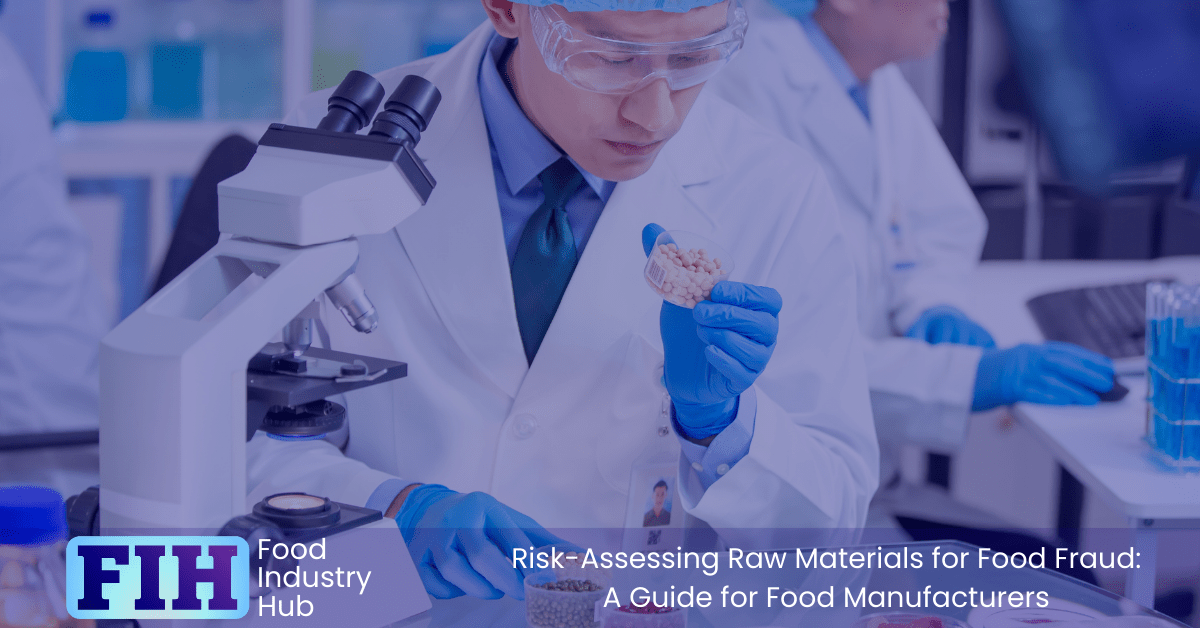
Economic Factors That May Incentivise Substitution, Adulteration, And Fraudulent Actions
Economic factors can play a significant role in incentivising substitution, adulteration, and fraudulent action applied to raw materials. When certain commodities are either scarce or expensive, there is often an incentive for suppliers to find cheaper alternatives that appear identical but lack the same quality of the original product.
Economic factors such as high prices may also encourage adulteration of goods with inferior ingredients in order to reduce costs whilst still appearing genuine on store shelves. Some suppliers may even go so far as committing fraud by falsely claiming that their products are made from a higher-grade material than they actually are in order to increase profits without delivering any real value.
The pressure to meet high demand while keeping costs low can lead some individuals or entities to resort to fraudulent activities. Economic factors such as fluctuations in commodity prices, competitive pricing pressures, or the pursuit of higher profit margins can create an environment where the temptation to substitute or adulterate raw materials is heightened.
A useful way to think about this is that foods that are consistently highly priced are generally subject to economic risk factors for food fraud – and food commodities that spike in price may be at risk when they become more expensive. You can track food commodity prices through services such as Mintec and The Food Price Monitoring and Analysis (FPMA) Tool made available by the Food and Agriculture organisation of the United Nations (FAO). In either case, it’s sensible to note within the vulnerability assessment whether a food material is subject to consistently high prices and or pronounced pricing volatility which may incentivise food fraud.
By way of example, herbs and spices are particularly at-risk for economic reasons, because the value of these materials is comparatively high, and it relatively easy to dilute powdered formats with other plant matter. In some cases, it is possible to replicate the organoleptic properties of the adulterated food material – so for example Ceylon cinnamon diluted with cassia.
Economic instability or financial hardships within the supply chain may push certain actors to engage in fraudulent actions as a way to mitigate losses or maintain profitability. So for instance, a food commodity subject to heightened pricing volatility may be more susceptible to fraud attempts throughout the supply chain at times when the price is uncharacteristically high.
The geopolitical instability brought about by the war in Ukraine with Russia’s invasion in 2022 serves as an interesting example of how food commodity prices can be sharply impacted throughout the global supply chain. The council of the European Union provides infographics of how the Russian invasion of Ukraine has aggravated the global food crisis, with a pronounced spike in grain prices worldwide directly coinciding with the invasion. While cereal grains may not historically be thought of as being at particular risk of food fraud, it is conceivable that there would have been financial incentive to misrepresent characteristics such as protein content during this period.
Understanding these economic drivers is crucial for food manufacturers to implement robust mitigation strategies against food fraud.
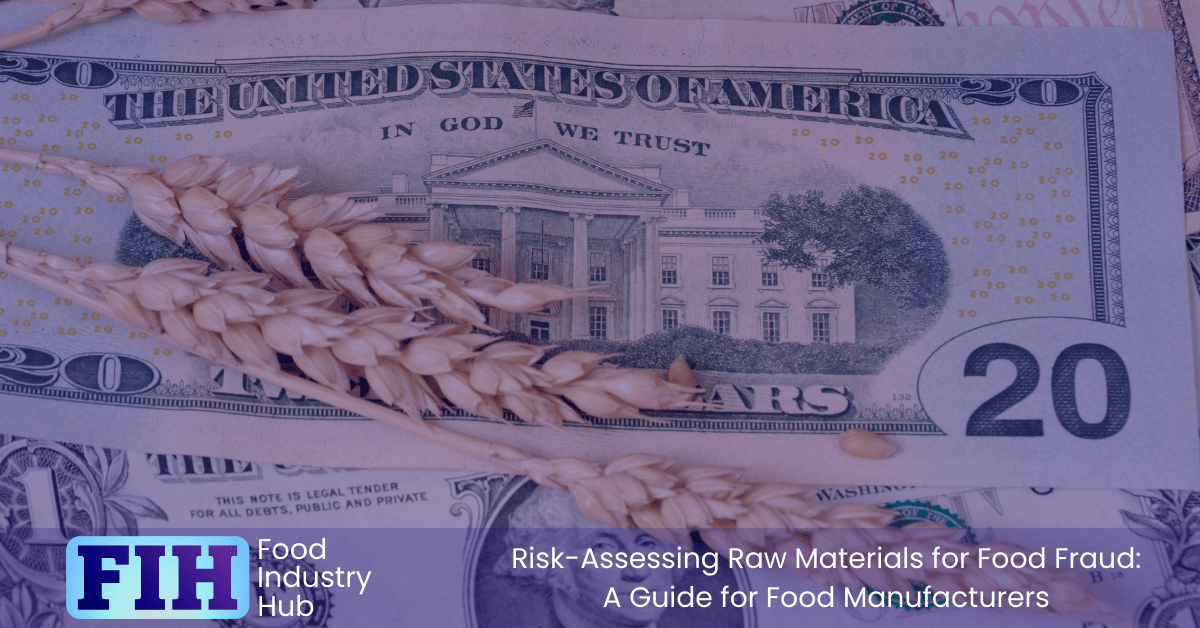
Ease Of Access to Raw Materials Throughout the Supply Chain
Raw materials may be considered to be vulnerable to substitution, adulteration, and fraud if access throughout the supply chain is unprotected or there are practical opportunities for criminals to handle them.
In general, a vulnerability assessment might approach this topic by considering the overall complexity of the supply chain (how many actors are involved in processing and/or distribution?) as well as the security precautions in place at each stage through supply.
Where suppliers of raw materials are certified to an assurance scheme recognised by the Global Food Safety Initiative (GSFI), it is common for the scheme requirements to specify security measures and access controls throughout the manufacture site and distribution chain. With this in mind, food manufacturers may find it reasonable to use certification to a GSFI recognise standard as a mitigator against access to raw materials.
It should be noted that in many cases, it is practically impossible to completely restrict access to raw materials throughout the entire supply chain. For instance, a significant amount of farmland where crops are grown could conceivably be accessed by unauthorised people. For this reason, it is unrealistic to expect all vulnerability assessments to conclude that access throughout the supply chain is entirely secure against unauthorised access. Rather, a vulnerability assessment should take ease of access to raw materials as being one factor among many that ultimately form the risk profile for the raw material.
Being pragmatic, a complex supply chain with many actors and relatively little restrictions around access to materials should be viewed as relatively higher risk for fraud than a more simple supply chain made-up of fewer actors and with greater restrictions around access to raw materials… but it is unrealistic to expect any supply chain to be completely impenetrable.

Sophistication Of Routine Testing, And the Ability to Identify Adulterants
The sophistication of routine testing has come a long way over the years. Today, businesses are able to test their raw materials for adulterants with much higher accuracy than was ever possible before. Tests can be conducted using advanced technology such as spectrography or gas chromatography which allows them to identify foreign substances in samples quickly and accurately. This is especially important when it comes to food products since even tiny amounts of an adulterant could pose serious health risks if consumed by customers. Tests can also be designed specifically for certain raw materials in order to detect any potential contaminants that might not show up on regular analysis methods.
Advanced technologies such as DNA testing, stable isotope analysis, and spectroscopy can help in pinpointing even the most subtle signs of adulteration. By investing in these cutting-edge techniques, food manufacturers can stay one step ahead of fraudsters who constantly evolve their methods.
Keep in mind, the vulnerability assessment should only recognise risk mitigation as a result of analytical testing if the actual testing carried out would effectively identify adulterants. It is important to avoid making the mistake of assuming reduced risk simply by virtue of the existence of analytical testing methods that could be used for fraud detection if those tests are not routinely carried out on the raw materials being evaluated. Similarly, analytical testing that is carried out but could not be relied upon to identify adulteration (e.g. testing for quality attributes rather than adulterants) should be discounted by the vulnerability assessment.
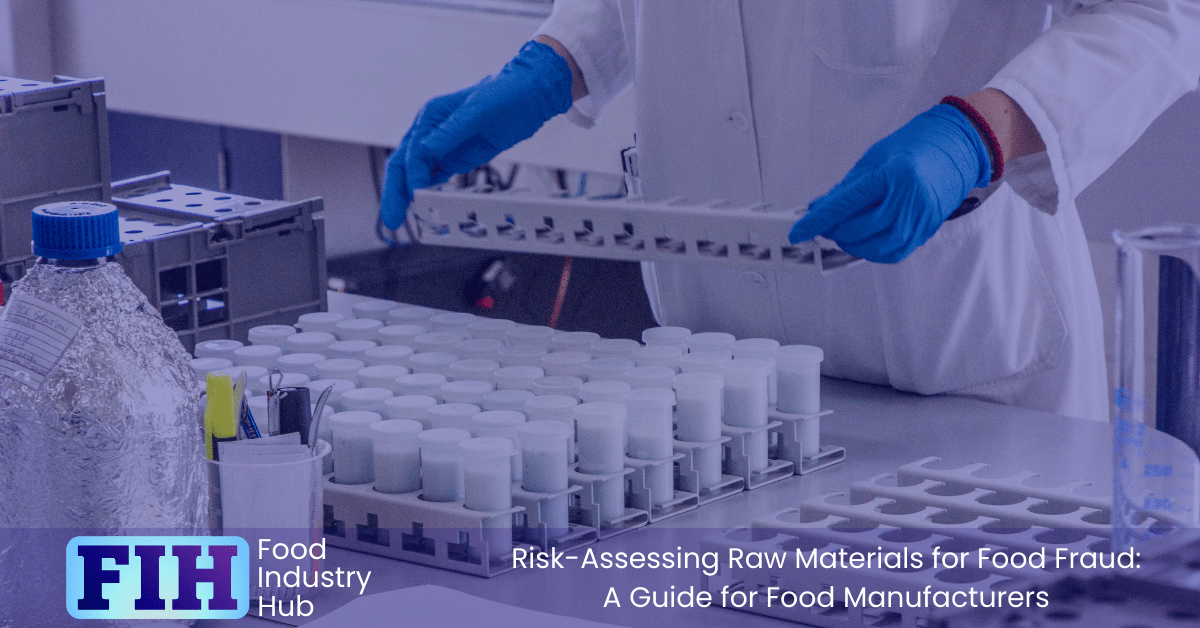
The Nature of The Raw Material, And Propensity to Conceal Adulteration
Detecting food fraud risks hinges greatly on understanding the inherent nature of raw materials and how they can potentially conceal adulteration. Some raw materials have characteristics that make it easier to hide adulteration. For instance, powders or liquids can easily mask the presence of lower quality or substituted ingredients.
The vulnerability assessment should consider the nature of each raw material in terms of its physical, chemical, and sensory properties. If the nature of the material would lend itself to concealing adulterants, then this would present an elevated risk in the context of the vulnerability assessment.
Olive oil can be easily diluted with cheaper vegetable oils, for example, and the physical properties of the adulterated product would be difficult to distinguish from authentic olive oil.
The vulnerability assessment should take into account the degree to which the nature of the material would facilitate fraudulent activities or hinder detection of adulterants.
Similarly, products with strong flavours can make it harder to detect alterations in taste. Additionally, raw materials that undergo extensive processing or blending can obscure the presence of contaminants or adulterants. Understanding these aspects of raw materials can help food manufacturers assess the risk of fraud and implement appropriate mitigation strategies to safeguard the integrity of their products.
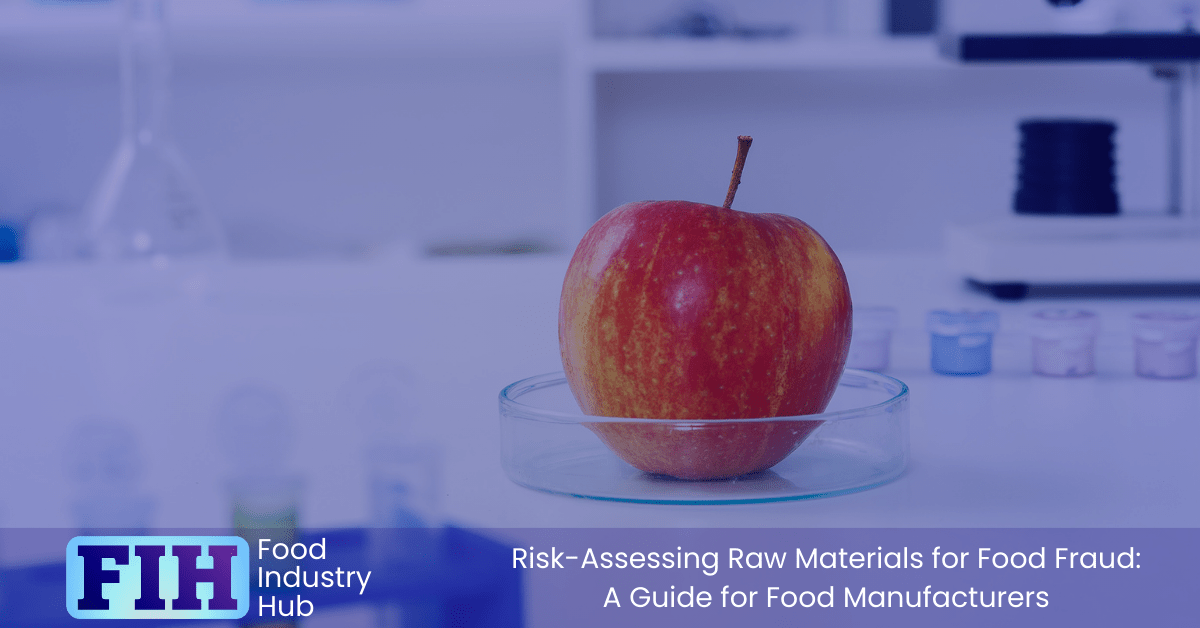
Outcomes and Actions Resulting from The Vulnerability Assessment
Vulnerability to substitution, adulteration, and fraud is difficult to objectively quantify because there are a combination of factors which might impact the overall perceived vulnerability – especially since these factors may not be equally weighted in significance.
The vulnerability assessment should result in a conclusion about the degree of risk associated with each raw material with consideration given to the significance of each of the risk parameters. This perceived risk should, in turn, result in a determination about whether analytical testing is necessary as a risk-mitigation initiative – along with an associated sampling frequency where testing is considered necessary.
The result of a vulnerability assessment should have practical implications for the quality management system in that it should identify whether or not analytical testing for the purpose of fraud risk mitigation is necessary – as well as the specific testing required and sampling frequency.
In other words, a vulnerability assessment might conclude that a raw material is not subject to elevated risk of fraud attempts, meaning proactive fraud risk mitigation actions are not necessarily required. Alternatively, the vulnerability assessment may conclude that a raw material is at elevated risk and specify actions that are required to control food fraud risks.

Authenticity Verification Testing – Mitigating Risks
By conducting regular tests on incoming batches of raw materials, manufacturers can ensure that the raw materials they are using are genuine and free from adulteration. Tests carried out should be specific to the raw material and vulnerabilities identified. There is a chasm of difference between QC testing for quality attributes, and dedicated fraud mitigation testing – so any testing strategy must target analyses to specifically for authenticity.
Analytical tests help in detecting any potential adulteration, substitution, or contamination that may occur along the supply chain. By identifying any discrepancies early on, you can take appropriate actions to address the issue and prevent compromised ingredients from reaching your production line. This proactive approach not only safeguards the integrity of your products but also protects your brand reputation and consumer trust.
Incorporating authenticity verification testing into your quality control measures can significantly reduce the likelihood of falling victim to food fraud schemes. It’s an essential tool in your arsenal to uphold the authenticity and safety of your food products.
Risk Awareness and Monitoring Emerging Trends
As a food manufacturer, it’s crucial to maintain a proactive approach in monitoring the landscape of raw material sourcing and production.
There are numerous food fraud reporting services that you can use to stay abreast of emerging risks. You can also read here for how food manufacturers can combat food fraud risks.
Engage with industry networks and subscribe to relevant publications to stay updated on emerging risks and trends. Regularly review and reassess your supplier relationships and verify their adherence to quality and authenticity standards. Implement robust traceability systems to track the journey of raw materials from source to production.
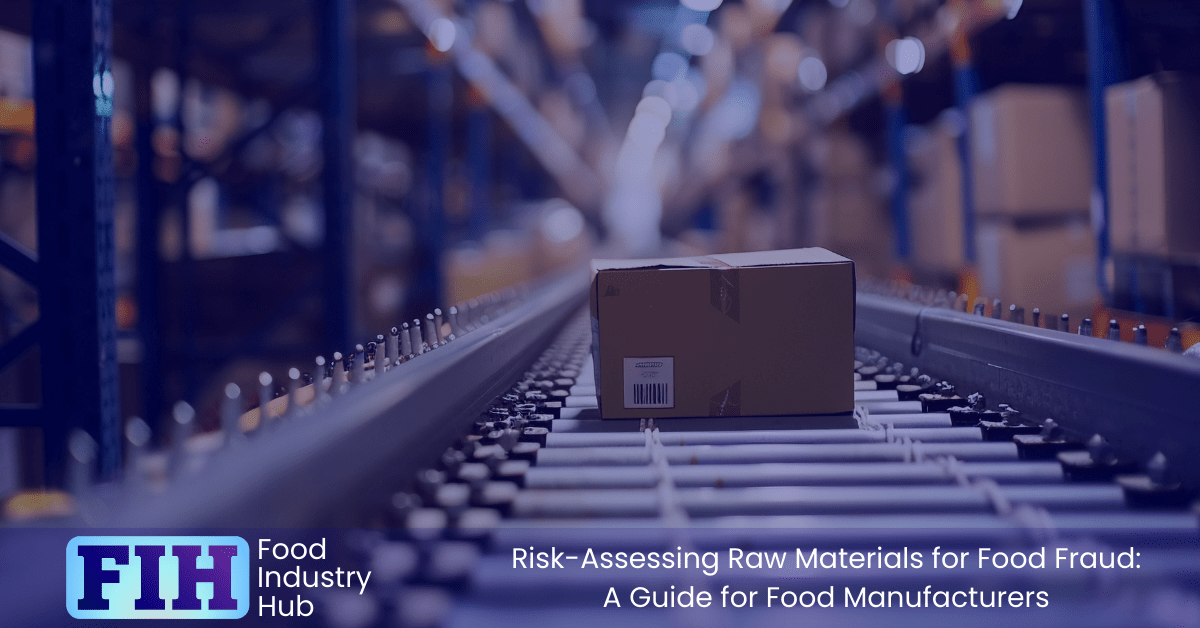
Potential Brand Damage from Inauthentic Raw Materials
Remaining unaware of the risks associated with inauthentic raw materials can lead to significant damage to your brand’s reputation. Using fraudulent or substandard ingredients in your food products can result in negative consequences that go beyond just financial losses.
Consumers today are more informed and conscious about the food they consume, and any hint of food fraud can tarnish your brand’s image. Inauthentic raw materials can lead to health risks for consumers, causing illnesses or allergic reactions, which in turn can trigger legal actions and hefty fines.
Moreover, if your brand is associated with food fraud, it can erode consumer trust and loyalty, leading to a loss of market share and ultimately impacting your bottom line. To safeguard your brand’s reputation, it’s crucial to implement robust raw material risk assessment strategies, conduct thorough supplier evaluations, and invest in traceability measures to ensure the authenticity and quality of your ingredients.
Prioritising the integrity of your raw materials not only protects your brand but also demonstrates your commitment to providing safe and genuine products to consumers.
Customer and Consumer Perception
When customers discover that the products they purchased aren’t made from the ingredients advertised, their trust in your brand diminishes. This erosion of trust can lead to negative word-of-mouth, impacting your brand reputation and customer loyalty.
Customers today prioritise authenticity, quality, and transparency in the products they choose. Therefore, any association with food fraud or inauthentic ingredients can result in customers feeling deceived and betrayed. This negative perception can’t only drive customers away but also deter potential new customers from trying your products.
To maintain a positive customer and consumer perception, it’s crucial to prioritise the authenticity and integrity of your raw materials. By ensuring transparency in your sourcing practices and consistently delivering on your brand promise, you can build trust and loyalty among your customer base.
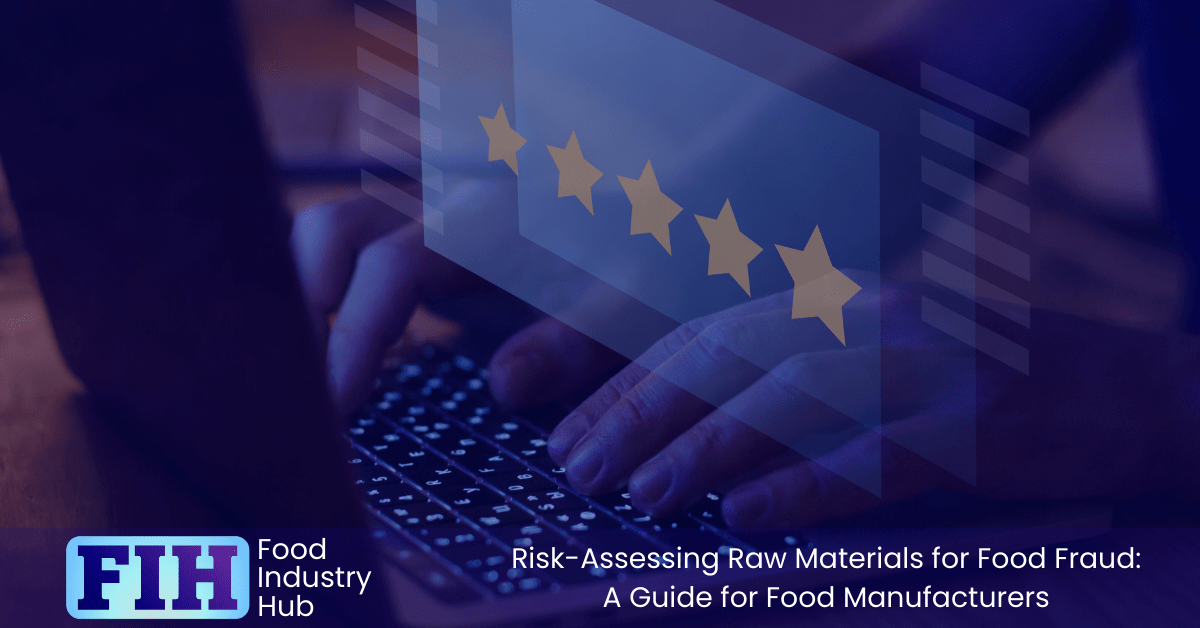
In Summary
A vulnerability assessment is an invaluable tool in determining what kind of risks an organisation may be exposed to when it comes to product substitution and adulteration. By examining the economic factors that may incite fraudulent behaviours, as well as identifying potential areas within the supply chain that offer easy access to raw materials, a Vulnerability Assessment will determine where special attention should be paid. In addition, authenticity verification testing can help mitigate many of these risks. Knowing how and why potential substitution and adulteration takes place will ensure that appropriate actions are put in place for any organisation looking to maintain its authenticity and confidence in their products.
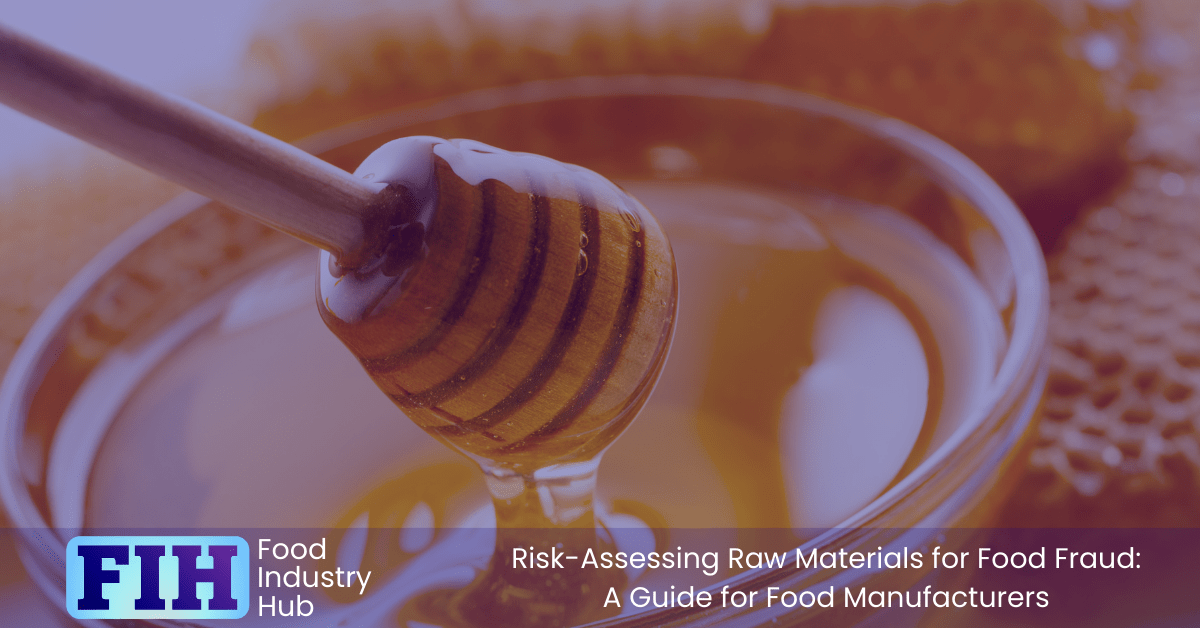
Further Resources
Food Industry Hub serves the food industry with a range of digital resources for the benefit of both commercial food manufacturers and food industry professionals.
For food manufacturers, we offer integrated management systems that give every user a direct interface with your QMS.
For food industry professionals, we provide an extensive signposting service in addition to informational content we hope you’ll find useful as you face new professional challenges. We have very ambitious plans to expand the range of services offered, and currently present informational content on management, safety and quality, food safety and quality culture, and professional success.

